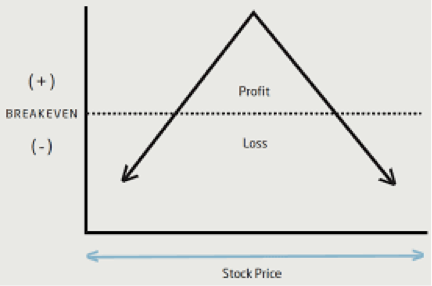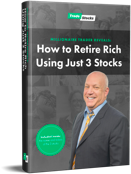
Using Options to Predict Stock Movement
If you have ever wondered how to predict stock movement in response to an earnings announcement, here’s a neat little trick. To use it, we need to go to the options market.
There is a strategy called a short straddle. It is created by selling a call and a put with the same strike price. It looks like this:

Source: TD Ameritrade
To estimate the option market’s expected range, place the strike price of the straddle at the same price as the current stock price (at-the-money), or close to it, and add the premiums. Add the sum to the strike price of the call and subtract it from the strike price of the put. These are the stock prices where the straddle breaks even at expiration.
For example, with a stock trading at $100, the 30-day $100 call and put are each trading at $4.00. The straddle is priced at $8.00, with breakevens of $92 and $108. This is telling us that the option market expects the stock to ‘most likely’ be between $92 and $108 come option expiration.
Why is this a reasonable ‘guesstimate’ of the price range of the stock? Let me ask you this – “Would a professional trader sell a straddle if he thought the stock would move further than the breakeven prices?” Probably not.
This shortcut is especially useful around earnings announcements. By observing the prices of the at-the-money call and put, for the expiration closest to earnings, a trader can get a feel for how far the option market believes the stock is most likely to move in response to the announcement. This could be an aide to a trader who is trying to decide how to play the stock, e.g. which option to buy.
Remember, this is only statistically what is “most likely.” There is always some probability that the stock will move beyond the range established by the straddle.
P.S. The short straddle as a trading strategy is extremely risky. You take on unlimited risk – if the stock moves far beyond either breakeven, your losses can be substantial.

















